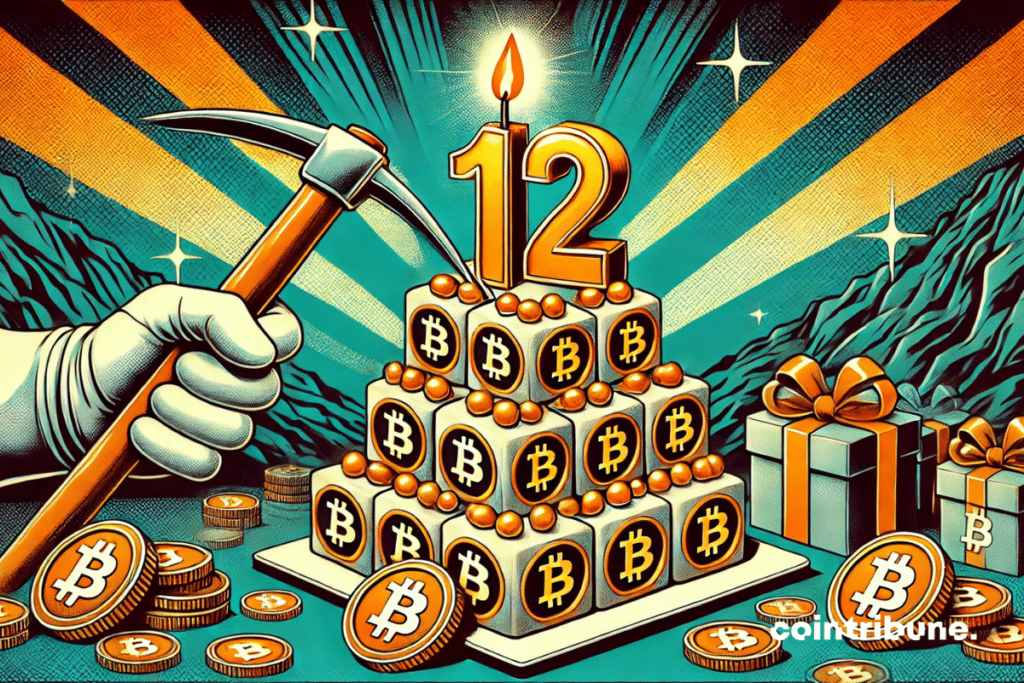Bitcoin: 12 Years Later, A Mystery Still Surrounds The First Halving
Bitcoin is celebrating today the 12th anniversary of its first halving, a historic event that halved miners’ rewards from 50 to 25 BTC per block. This date marks the beginning of a series of transformations that have shaped the economy of the invention of Satoshi Nakamoto, now valued at over 95,000 dollars.

A decade of programmed reduction that forges Bitcoin’s rarity
On November 28, 2012, the Bitcoin network experienced its first halving, an event expected by its creator Satoshi Nakamoto to control the inflation of crypto.
This mechanism, integrated into the source code, automatically reduces miners’ rewards by 50% every 210,000 blocks, or about every four years. After three successive halvings, the reward per block dropped from 50 BTC to only 3.125 BTC today, drastically limiting the influx of new bitcoins into the market.
This programmed scarcity has proven to be a major catalyst for Bitcoin’s valuation. With each halving, the selling pressure from miners mechanically decreases, creating a scarcity effect that has historically preceded significant upward phases. The last halving in April 2024 was no exception to this rule, as Bitcoin has since risen by over 45%.
With only 1.2 million BTC left to mine out of the 21 million planned, the race for extraction is becoming increasingly competitive. Mining difficulty recently reached a new historical record of 102.3 trillion, reflecting the intensification of competition among miners.
The mining industry adapts to new challenges
In the face of the continued reduction of rewards, the mining ecosystem is undergoing a major restructuring phase. Major players in the sector like Marathon Digital have had to adapt their strategies, particularly by selling part of their production to maintain their profitability. Others, like TeraWulf, have considered mergers to pool their resources.
Innovation is becoming crucial for the survival of miners. Some are turning to artificial intelligence to optimize their operations, while others are exploring alternative energy sources. El Salvador stands out as a pioneer in developing Bitcoin mining using volcanic geothermal energy.
This quest for efficiency intensifies as Bitcoin reaches new heights, nearing 100,000 dollars in November 2024. Miners now have to juggle increasing operational costs and market volatility.
The 12th anniversary of the first halving thus marks a turning point in Bitcoin’s history, demonstrating the resilience of its economic model in the face of growing challenges. As the next halving looms on the horizon in 2028, the mining industry continues its transformation, driven by innovation and constant adaptation to new market realities.
Maximize your Cointribune experience with our "Read to Earn" program! For every article you read, earn points and access exclusive rewards. Sign up now and start earning benefits.
Passionné par le Bitcoin, j'aime explorer les méandres de la blockchain et des cryptos et je partage mes découvertes avec la communauté. Mon rêve est de vivre dans un monde où la vie privée et la liberté financière sont garanties pour tous, et je crois fermement que Bitcoin est l'outil qui peut rendre cela possible.
The views, thoughts, and opinions expressed in this article belong solely to the author, and should not be taken as investment advice. Do your own research before taking any investment decisions.